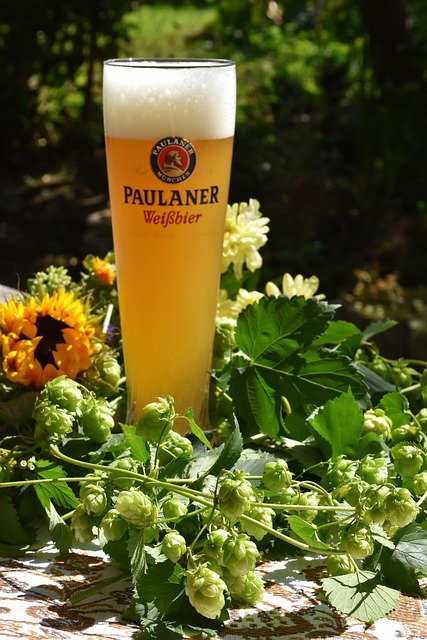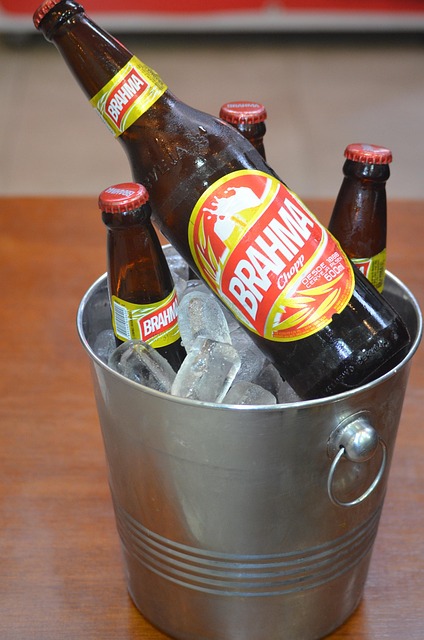The Southern Willamette Valley in Oregon is known for its progressive farmers adopting sustainable practices to produce high-quality crops and wines while minimizing environmental impact. This region excels in eco-friendly viticulture due to its diverse microclimates, rich volcanic soils, and commitment to organic farming, permaculture, and precise irrigation. Its unique terroir results in distinctive wine flavors, and the valley is also a prominent craft beer hub thanks to local collaboratives promoting sustainability and innovation.
“Embark on a sensory journey through Oregon’s southern Willamette Valley, where sustainable farming and innovative viticulture intertwine to create unique wine blends. This region stands as a testament to eco-friendly practices, offering a culinary experience like no other. From exploring sustainable methods in vineyards to understanding the geography’s impact on flavor profiles, we delve into the heart of Oregon’s wine culture. Join us as we uncover the secrets behind the valley’s distinct blends and celebrate the community-driven approach that makes it a must-visit destination for wine enthusiasts embracing sustainability.”
- Exploring Sustainable Farming in Southern Willamette Valley
- Unique Blends: A Culinary Journey through Oregon's Heart
- Eco-Friendly Viticulture: Methods and Benefits Localized
- Tasting the Terrain: How Geography Shapes Wine Flavors
- Embracing Community: The Role of Local Collaboratives
Exploring Sustainable Farming in Southern Willamette Valley

The Southern Willamette Valley, known for its lush green landscapes and fertile soils, has become a hotbed for innovative farmers embracing sustainable practices. This commitment to environmental stewardship is reflected in every step of their agricultural journey, from crop cultivation to wine production. These farmers are not just growing food; they’re crafting unique blends that tell the story of their connection to the land, ensuring both quality and longevity for future generations.
By adopting sustainable farming methods, such as organic techniques, water conservation strategies, and diverse crop rotations, these pioneers are reducing their environmental impact while enhancing soil health. This dedication to sustainability not only benefits the local ecosystem but also contributes to a growing global movement that recognizes the importance of preserving our natural resources for years to come.
Unique Blends: A Culinary Journey through Oregon's Heart

The Southern Willamette Valley in Oregon is a hidden gem for culinary enthusiasts, offering a unique blend of terroir and tradition that translates into truly remarkable flavors. Here, farmers and winemakers embrace sustainable practices, nurturing vines with care and respect for the land. This commitment to environmental stewardship isn’t just a trend; it’s a way of life deeply ingrained in the region’s cultural identity. The valley’s diverse microclimates and rich volcanic soils provide an ideal canvas for experimentation, allowing vintners to create truly distinctive blends that capture the essence of this enchanting corner of Oregon.
From bold red composites with hints of dark fruit and spice to elegant white wines showcasing citrus and mineral notes, each sip tells a story woven into the very fabric of this picturesque valley. Visitors can embark on a culinary journey through charming wineries and vineyards, immersing themselves in the art of winemaking while savoring the region’s unique terroir. It’s a celebration of taste, sustainability, and community—a dance between man and nature that has become synonymous with the Southern Willamette Valley’s vibrant and ever-evolving wine scene.
Eco-Friendly Viticulture: Methods and Benefits Localized

The Southern Willamette Valley, known for its picturesque landscapes and rich agricultural heritage, has embraced eco-friendly viticulture, leading the way in sustainable practices among Oregon’s wine regions. This approach prioritizes minimal environmental impact while maximizing the unique character of the local terroir. Winemakers here employ various methods such as organic farming, where chemicals are replaced with natural alternatives, and permaculture principles that promote ecological balance.
By adopting these sustainable practices, the valley’s wineries contribute to preserving the area’s biodiversity and water quality. The use of native vegetation and cover crops helps prevent soil erosion, while precise irrigation systems ensure water efficiency. These efforts not only benefit the local ecosystem but also enhance the wine’s quality by allowing grapes to mature naturally, resulting in distinctive, complex flavors that reflect the valley’s unique blend of climate and geography.
Tasting the Terrain: How Geography Shapes Wine Flavors

The Southern Willamette Valley, with its diverse microclimates and rich volcanic soils, offers a unique canvas for winemakers. The geography here plays a pivotal role in shaping the distinct flavors of the wines produced. Elevations range from 600 to 4,000 feet, influencing temperature and sunlight exposure, which in turn impacts grape ripeness. The valley’s volcanic ash deposits also contribute to mineral-rich soils, adding complex notes to the wine. These natural elements work in harmony with sustainable practices embraced by many local vineyards, where careful management ensures that each vintage reflects the specific character of its terrain.
Embracing Community: The Role of Local Collaboratives

The Southern Willamette Valley, known for its lush landscapes and vibrant communities, has become a hub for craft beer enthusiasts. Beyond the diverse breweries themselves, local collaboratives play a pivotal role in fostering an inclusive environment. These groups facilitate unique experiences by bringing together farmers, brewers, and artists who share a passion for sustainable practices and innovative blends. By embracing community-driven initiatives, the region creates a rich tapestry of flavors that sets it apart on the craft beer map.
Through these collaboratives, local producers can experiment with diverse ingredients sourced from nearby farms, resulting in one-of-a-kind brews. This collective approach not only strengthens the sense of community but also promotes environmentally friendly sustainable practices. The valley’s growing reputation as a destination for unique blends is a testament to the power of collaboration and shared passion among its dedicated craft beer advocates.
